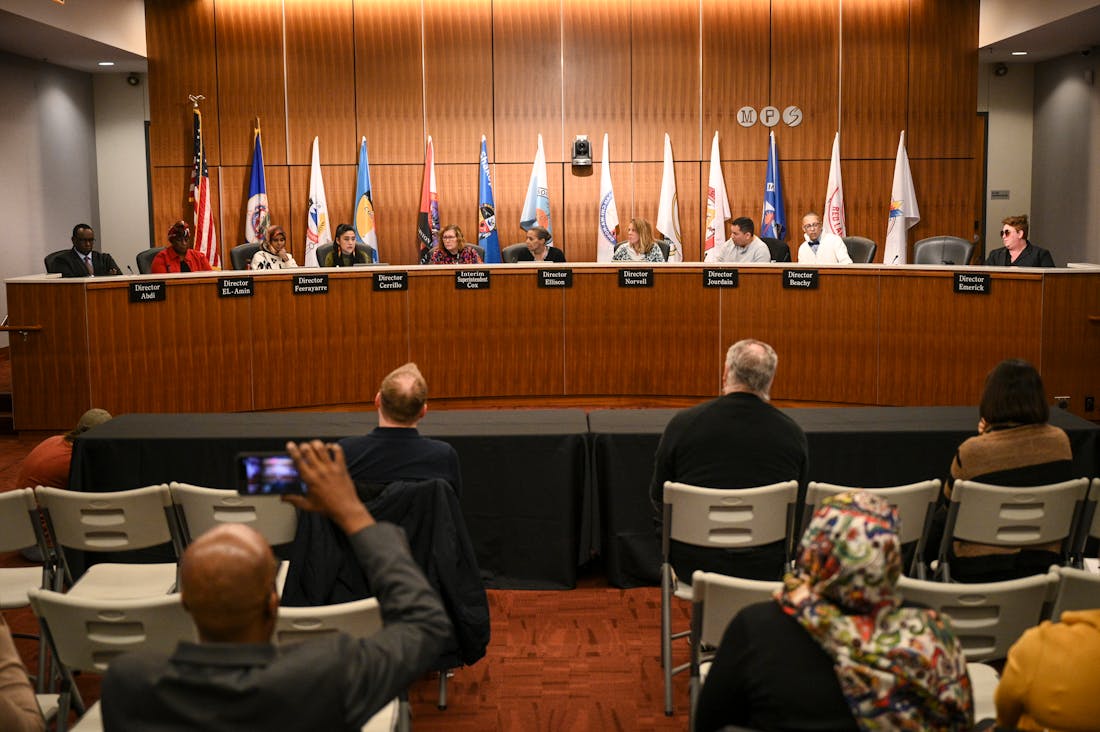Minneapolis Public Schools holds too much real estate, forcing the state's fourth-largest district to spend more money per student than its neighbors.
That's the upshot of the district's latest five-year financial projection presented to the school board Tuesday. And even though district Budget Director Thom Roethke said his department isn't "in the business of prescribing change," he did give the board a bottom line.
"I think our perspective, as a department, is that the district is sized for a number of kids we don't have anymore," Roethke said. "That would have to be addressed."
The financial assessment, known internally as the pro-forma, comes at a time when Minneapolis and other urban districts are grappling with the tail end of an enrollment decline fueled largely by a massive shift toward the suburbs. Most state funding, which makes up a large chunk of districts' budgets, is tied to enrollment.
And fewer young children live in Minneapolis than any year in the last decade, which deepens the floor for future enrollment.
Approximately 22,000 children younger than 5 were living in Minneapolis in 2021 and 2022, according to the U.S. Census Bureau's American Community Survey. Those numbers represent a drop of about 5,000 children from 2018 and 2019.
Roethke doesn't expect those numbers to budge much, given national data showing millennials and Gen Z aren't having as many children as previous generations, if they're having kids at all. A Washington Post study found that the rate of childless households among younger Americans has risen dramatically since the 1970s while the number of homes with four or five children has been on a steady decline.
"That's our kindergarten pipeline for the next five years," Roethke said.
The Minneapolis district spends more than $20,000 per student, according to Minnesota Department of Education data. That's about as much as St. Paul spends but much more than the suburban districts of Osseo, Anoka-Hennepin or Rosemount-Apple Valley-Eagan.
Minneapolis schools comprise 8.5 million square feet of building space, according to a presentation by the district's finance department, even though it enrolls fewer students than districts with smaller footprints such as Anoka-Hennepin and St. Paul.
"This is all space you have to heat," Roethke said. "You have to clean it."
The district has enough classroom space to serve more than 40,000 students while enrollment sits at about 27,000. District officials expect that number to decrease slightly and stay there.
Roethke's presentation puts into starker view the district's efforts to transform its schools. Officials have known for years that several of its buildings, particularly on the North Side, are underenrolled. Those schools are, in turn, more expensive to run because of the fixed operational costs and the minimum number of personnel required to run them.
"We are trying as hard as we can to keep our head above water," Board Member Ira Jourdain said.
That's why the school board will vote in December on a resolution to audit the district's real estate holdings. Board Chair Sharon El-Amin introduced the resolution Tuesday, which indicates that schools may be closed, consolidated or repurposed. District officials will make their final recommendations during the 2025-26 academic year.




